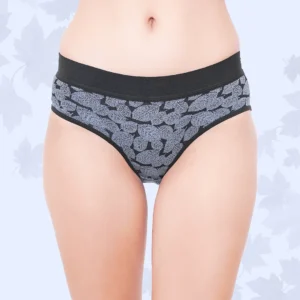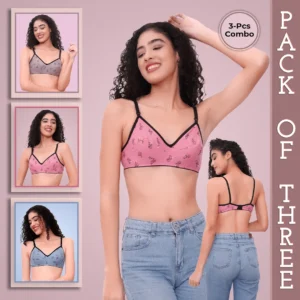Introduction to Bra Sizing
Finding the right bra size is more than just a matter of fashion—it’s about health, comfort, and confidence. Surprisingly, studies show that nearly 80% of women wear the wrong bra size, often without realizing it. Wearing an ill-fitting bra can cause neck pain, back strain, poor posture, and even long-term breast tissue damage. On the flip side, a properly fitted bra can enhance comfort, improve confidence, and even make clothes look better on your body.
A big reason for this widespread issue is that most people don’t fully understand how bra sizing works. Some believe that the bigger the number, the larger the bra, or that cup size alone determines fit. In reality, bra sizes are a combination of measurements, and understanding the difference between the band and cup is crucial.
Think of bra sizing like shoe sizes—just because two brands carry a “size 8” doesn’t mean they’ll fit the same. Similarly, bra sizing can vary across countries, brands, and styles, which makes understanding the measuring process even more important.
So, before we dive into the practical steps of measuring your bra size, let’s break down the basics, uncover common misconceptions, and set the foundation for accurate and comfortable sizing.
Why Bra Size Matters for Comfort and Health
Wearing the right bra is not just about aesthetics—it directly impacts your physical well-being. A bra that is too tight can restrict circulation, cause painful red marks, and even compress breast tissue in harmful ways. Meanwhile, a bra that is too loose offers no support, leading to sagging, shoulder strain, and discomfort, especially for women with larger busts.
From a health perspective, the right bra helps distribute breast weight evenly, which prevents slouching and reduces strain on the back and shoulders. It also supports breast tissue, which can prevent premature sagging over time. For women with active lifestyles, a supportive bra reduces bounce and minimizes the risk of ligament damage.
Comfort-wise, the correct bra size can make all the difference in daily life. Clothes drape better, you feel less restricted, and you don’t find yourself constantly adjusting straps or tugging at the band. Beyond that, there’s a psychological benefit: when you know your bra fits well, you feel more confident in your own skin.
Sadly, many women accept discomfort as “normal” because they assume bras are supposed to feel that way. But the truth is, the right bra should feel almost invisible—it supports without digging, lifts without squeezing, and feels natural enough to forget you’re wearing it.
Common Misconceptions About Bra Sizes
When it comes to bras, misinformation spreads easily, and myths often lead women to stick with the wrong size for years. Let’s tackle some of the most common misconceptions:
“Bigger cup size means bigger breasts.”
Not entirely true. Cup size is relative to band size. For example, a 34C is not the same cup volume as a 38C—the 38C cup is larger because it’s on a bigger band.“Once you find your size, it never changes.”
Your bra size can change with weight fluctuations, hormonal shifts, pregnancy, aging, or even lifestyle changes like working out more often.“All brands and countries use the same sizing.”
Unfortunately, bra sizing isn’t universal. A 36D in the U.S. may fit differently in the U.K. or Europe. This is why conversions and trying bras on matter.“If a bra feels tight at first, it will ‘stretch out.’”
While bras may loosen slightly with wear, starting with a size that’s too small is not healthy. You need a snug but comfortable band, not one that leaves marks.“Sports bras don’t need sizing.”
Sports bras absolutely need proper sizing. Wearing the wrong one during high-impact activity can cause damage to breast tissue and discomfort.
By clearing up these misconceptions, you can approach bra sizing with a more realistic understanding. The goal is not just to fit into a standard size but to find the size and style that support your body best.
Understanding the Basics of Bra Sizes
Bra sizes are made up of two main components: the band size (the number) and the cup size (the letter). The band size refers to the measurement around your ribcage, just under your bust. The cup size, on the other hand, is determined by the difference between your bust measurement (the fullest part of your chest) and your band measurement.
For example, let’s say you measure 34 inches around your ribcage and 37 inches around the fullest part of your bust. The difference is 3 inches, which typically corresponds to a C cup. Combined with your band size, your bra size would be 34C.
Here’s a simplified breakdown:
Band size (number): The measurement around your ribcage, typically rounded to the nearest even number (e.g., 32, 34, 36).
Cup size (letter): Determined by how many inches your bust measurement is larger than your band size. For instance, 1-inch difference = A cup, 2 inches = B cup, 3 inches = C cup, and so on.
It’s also important to understand the concept of sister sizes—bras that have the same cup volume but different band sizes. For example, 34C, 32D, and 36B all have roughly the same cup volume but fit differently depending on the band. This can be helpful if you’re between sizes or a brand doesn’t carry your exact measurement.
Understanding these basics is crucial before moving on to measuring at home, because it helps you interpret your results more accurately and avoid confusion when shopping.
What Do the Numbers and Letters in Bra Sizes Mean?
At first glance, bra sizes like 34B, 36D, or 32F may seem random, but there’s a clear system behind them. Let’s break it down:
The number (band size) measures the circumference of your ribcage, just below the bust. It usually ranges from 28 to 44 in most brands, though some go beyond.
The letter (cup size) indicates how much larger your bust is compared to your band measurement. Each letter represents about an inch difference.
Here’s a quick chart to visualize the cup sizes:
| Bust – Band Difference | Cup Size |
|---|---|
| 1 inch | A |
| 2 inches | B |
| 3 inches | C |
| 4 inches | D |
| 5 inches | DD/E |
| 6 inches | DDD/F |
| 7 inches | G |
But remember: cup size is not absolute. A 36C is not equal to a 32C. Why? Because cup size is proportional to the band size. This is why a woman wearing a 34D may actually have smaller-looking breasts than a woman in a 32DD—it all depends on the frame.
Understanding this proportional relationship helps eliminate confusion and empowers you to shop smarter. Instead of being fixated on a single “ideal size,” you’ll realize that your best fit depends on both numbers and letters working together.






0 Comments